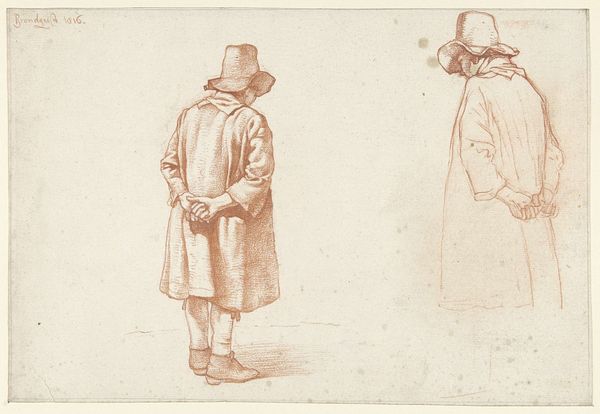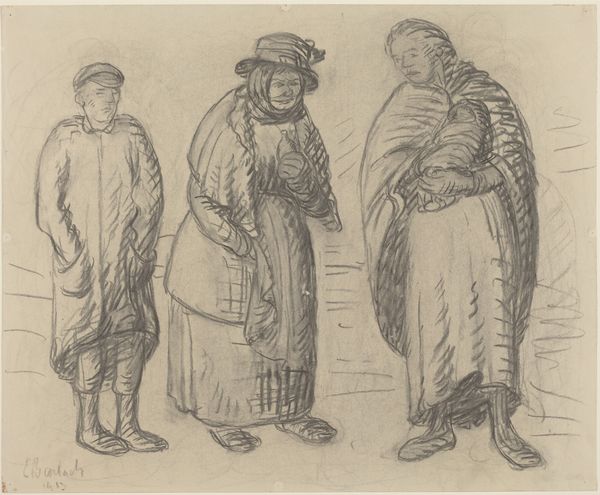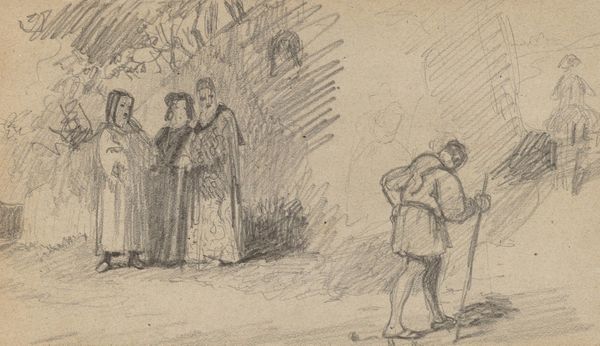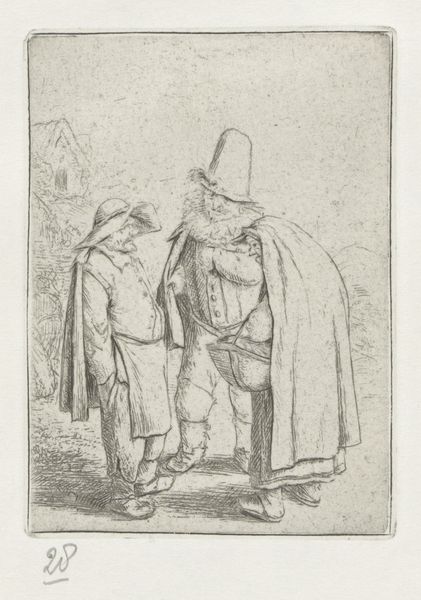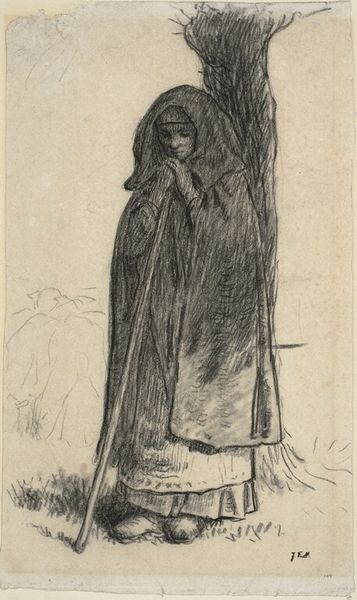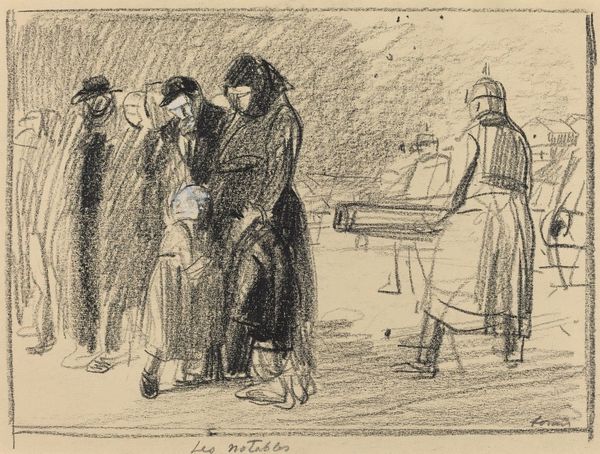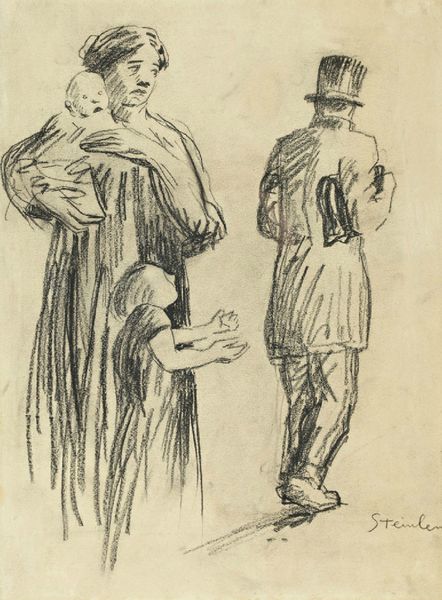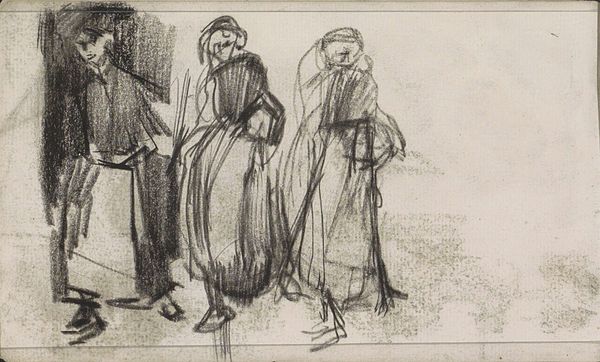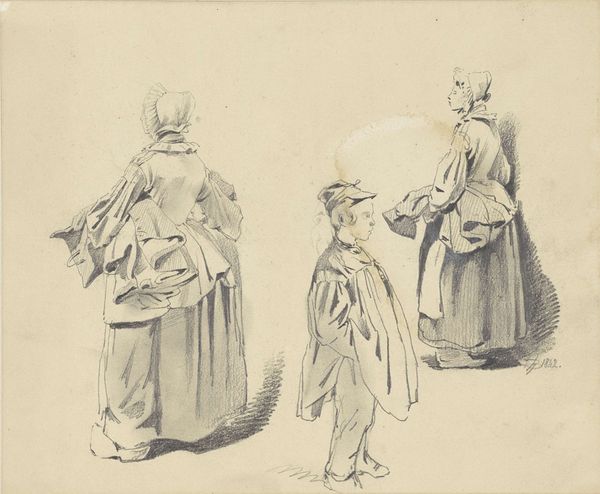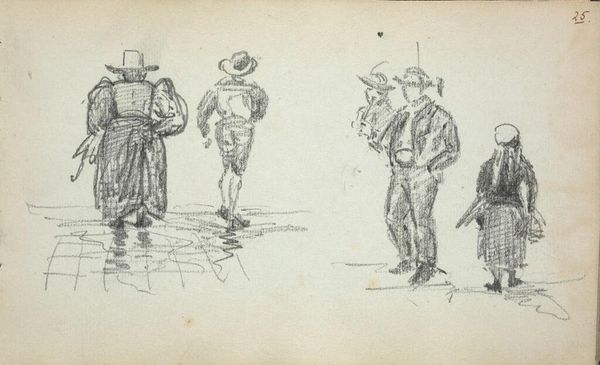
Lezende vrouw met wandelstok en een vrouw met een kind op de arm 1876 - 1877
0:00
0:00
drawing, paper, pencil
#
portrait
#
drawing
#
amateur sketch
#
toned paper
#
light pencil work
#
quirky sketch
#
pencil sketch
#
sketch book
#
incomplete sketchy
#
paper
#
personal sketchbook
#
pencil
#
sketchbook drawing
#
genre-painting
#
sketchbook art
#
realism
Dimensions: height 158 mm, width 247 mm
Copyright: Rijks Museum: Open Domain
Curator: Here we have a pencil drawing by Willem Cornelis Rip, created sometime between 1876 and 1877. It’s titled "Lezende vrouw met wandelstok en een vrouw met een kind op de arm," which translates to "Reading woman with walking stick and a woman with a child on her arm." Editor: It strikes me as quite a candid piece. There’s a certain lightness to it, almost like a quick sketch done in a notebook. The strokes of the pencil are quite visible, aren't they? Curator: Precisely. Rip seems to be capturing ordinary people and daily life, fitting into a broader Realist movement, depicting scenes from the world around him without idealizing them. Editor: The paper has a distinct tone, like something reclaimed or repurposed, perhaps easily obtained in everyday settings, making art from readily available materials. What do you think the implications are of using humble means to represent such people? Curator: It reflects a commitment to democratizing art, to capturing the realities of everyday life without the pretense of grandeur. The accessibility of the materials echoes the accessibility, or lack thereof, to formal societal institutions of the sitters. Editor: Interesting, also the marks where the figures are drawn almost feel like labor itself in material form: quick, purposeful lines doing work on paper. Do you think that reflects the conditions or status of the people being sketched? Curator: Undoubtedly, the sketchy nature perhaps points to the transience of their position in society at large, existing, observed but fleeting. The way the woman reading is supported by a walking stick, it shows their social existence and maybe vulnerability at that time. Editor: And what is being consumed here? Everyday life. Experiences from the perspective of two women and, in that sense, their labour is material as well; both social and emotional work. Curator: Right, he’s interested in observing rather than aggrandizing these women within societal constraints. Editor: There's a real sense of immediacy, of him wanting to record a moment. I'm interested in these depictions of subjects and its cultural purpose in society. It gives a window into understanding social experiences of that era. Curator: Ultimately, I see this study of two women with subtle commentary of gender in society. Editor: Absolutely. It reminds us of how art can be rooted in the labor of the artist and its representation for future consumption.
Comments
No comments
Be the first to comment and join the conversation on the ultimate creative platform.
